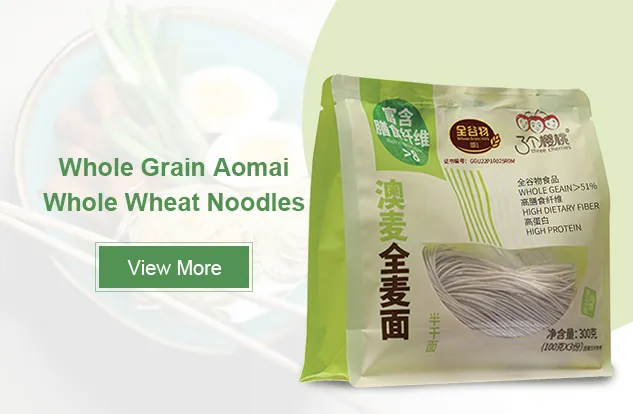wheat pasta
The Rise of Wheat Pasta A Healthy Alternative for Modern Diets
In recent years, there has been a significant shift in dietary preferences toward healthier and more sustainable eating practices. One ingredient that has gained considerable attention is wheat pasta. This wholesome alternative to traditional pasta offers numerous benefits, making it a popular choice among health-conscious individuals and culinary enthusiasts alike.
1. Nutritional Benefits of Wheat Pasta
Wheat pasta, typically made from whole wheat flour, is packed with essential nutrients. Unlike traditional refined pasta, whole wheat pasta preserves the bran and germ of the wheat grain, which are rich in fiber, vitamins, and minerals. This increased fiber content supports digestive health, helping to prevent constipation and promoting a feeling of fullness, which can aid in weight management.
Moreover, whole wheat pasta is an excellent source of complex carbohydrates, which provide a steady release of energy. This can be particularly beneficial for athletes or individuals with active lifestyles. It also contains protein, albeit in smaller amounts than some of its counterparts like chickpea or lentil pasta, making it a great addition to a balanced diet.
2. The Role of Wheat Pasta in a Balanced Diet
Incorporating wheat pasta into a balanced diet can yield a variety of health benefits. The fiber in whole wheat pasta can help regulate blood sugar levels, making it a suitable option for individuals with diabetes. It lowers the glycemic index of the meal, reducing spikes in blood sugar that often follow the consumption of highly refined carbohydrates.
Additionally, the nutrients found in wheat pasta, such as B vitamins, iron, and magnesium, are essential for energy production and overall metabolic health. B vitamins, in particular, play a critical role in converting food into energy, supporting brain function, and maintaining healthy skin.
Wheat pasta is incredibly versatile in the kitchen. It can be used in various dishes, from traditional Italian recipes like spaghetti and meatballs to innovative salads and stir-fries. The nutty flavor and slightly chewy texture of wheat pasta pair well with a range of sauces, from rich and creamy to light and tangy.
wheat pasta

For those seeking to reduce gluten in their diet, there are also gluten-free options made from alternative grains such as quinoa or rice. However, traditional wheat pasta remains a staple for many due to its affordability, availability, and ease of preparation.
4. Sustainability and Environmental Impact
Choosing wheat pasta over more processed pasta options can also be a step toward more sustainable eating. Whole wheat production generally requires less water and energy compared to refined grains, making it an environmentally friendly choice. Additionally, many wheat pasta brands prioritize sustainable farming practices, sourcing their wheat from responsible growers.
Supporting local wheat farmers through the purchase of domestically produced pasta can further reduce your carbon footprint, as it minimizes transportation emissions. As consumers become more aware of the impact of their food choices on the environment, wheat pasta emerges as a practical option that aligns with values of sustainability.
5. The Future of Wheat Pasta
The future of wheat pasta looks promising as more individuals become conscious of their dietary choices. Health trends continue to favor whole grains, and wheat pasta is well-positioned to satisfy this demand. With an array of innovative recipes and brands continuously emerging, the food industry is evolving to accommodate a growing appreciation for wholesome ingredients.
Moreover, as research highlights the health benefits of whole grains, there is a greater emphasis on integrating foods like wheat pasta into various dietary protocols. Whether you are following a Mediterranean diet, a vegetarian lifestyle, or simply seeking to eat cleaner, wheat pasta serves as a beneficial addition.
Conclusion
In conclusion, wheat pasta is not just a comforting meal but a nutritious, versatile, and sustainable choice in modern diets. With its myriad health benefits, culinary adaptability, and positive environmental impact, it is no wonder that wheat pasta is making a comeback. As we continue to navigate the complexities of nutrition and sustainability, embracing such wholesome ingredients could be key to fostering a healthier lifestyle for ourselves and the planet. So, the next time you reach for pasta, consider opting for the whole wheat variety—it’s a simple yet effective step toward better health.
-
Unleash Your Inner Chef with Delectable Italian Pasta CreationsNewsAug.01,2025
-
Savor Health and Flavor: Irresistible Soba Noodles for Sale Await!NewsAug.01,2025
-
Nourish Your Body with Premium Organic Ramen - A Culinary Delight AwaitsNewsAug.01,2025
-
Elevate Your Dishes with Our Exquisite Kinds of Egg NoodlesNewsAug.01,2025
-
Dive into Flavorful Convenience with Our Ramen OfferingsNewsAug.01,2025
-
Discover Exquisite Types of Naengmyeon and Chilled Soba NoodlesNewsAug.01,2025
-
Is Whole Wheat Pasta Healthy?NewsMay.30,2025
Browse qua the following product new the we

















































































































